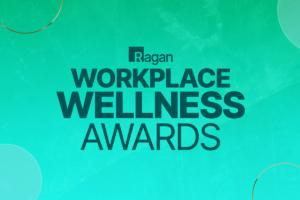Financial wellness benefits for today and tomorrow
PwC’s Aaron Harding notes finances are a top employee stress, making it imperative employers offer support and solutions covering a range of financial topics.

Many studies are reporting employees are making financial benefits a top priority. And with Financial Wellness Month winding down, Workplace Wellness Insider spoke with Aaron J. Harding, U.S. Employee Financial Wellbeing Leader, PwC, to learn his take on this. He shares insights from a recent PwC Pulse Survey as well as why internal communications are crucial to a financial wellness program’s success.
Workplace Wellness Insider (WWI): We are fast approaching the two-year mark for the COVID-19 pandemic. What impact has the pandemic had on employees’ financial wellness?

Aaron J. Harding: Both before and during the pandemic, we’re finding that finances are the top cause of employee stress, even above job, health and relationship stress combined. In the first year of the pandemic, many employees encountered extreme uncertainty in areas like household job loss and reduced incomes, all of which impacted their ability to meet monthly expenses and save for their longer-term goals like retirement. And now people are dealing with a general increased cost of living and continued pandemic anxiety. But interestingly, we’ve also seen some positive momentum in terms of saving rates and reduced spending. That held true last year both in our annual PwC Employee Financial Wellness Survey and based on the financial coaching we provide to thousands of client employees. We’re currently in the midst of conducting our 2022 Employee Financial Wellness Survey, and it will be interesting to see whether the increased focus on building a savings cushion for emergencies is a trend that’s here to stay.
WWI: Why should workforce financial wellness be a concern for employers?
Harding: Financial stress impacts an organization’s bottom line in areas like productivity, retention and physical health. We found that 63% of employees say that their financial stress has increased since the start of the pandemic, and employees whose stress has increased are four times as likely to admit that their personal finances have been a distraction at work and twice as likely to have avoided addressing a medical issue due to cost.
One of the top findings from a recent PwC Pulse Survey found that business leaders cited the ability to hire and retain talent as both the most important factor (77%) and biggest risk (48%) in reaching their organizations’ growth goals in 2022. Retention matters now more than ever with the great resignation or great reshuffle, and an overwhelming 76% of financially-stressed employees say they’d be attracted to another company that cared more about their financial well-being.
Employee wellness is critical, particularly when employees are seeking greater meaning and purpose in their lives amidst a host of external stressors. Financial wellness benefits are a key part of employees feeling valued by their employer.
WWI: Often employers’ financial wellness benefits are centered on retirement. What other financial topics or benefits do you think employers should consider including and why?
Harding: Employers are often focused on tomorrow while employees are often focused on today. Therefore, it’s critical that employers help employees with a broad range of financial topics including cash and debt management and the financial impacts of life events like becoming a parent or dealing with divorce if they want to help them achieve their retirement planning goals. Not only is it the right thing to do, but it also impacts employees’ ability to save for retirement and other longer-term goals. We often find, for example, that employees who aren’t saving enough for retirement are dealing with underlying debt that’s causing them financial stress. By helping an employee develop a debt paydown plan and finding strategies for better managing their cash flow, employers can help their employees get to the root cause of their retirement savings insufficiency and avoid their raiding retirement plans due to a lack of sufficient emergency savings.
WWI: What steps—whether adding new benefits or shoring up existing—should employers consider taking to strengthen its workforce financial wellness? And who are the stakeholders within the organization who could/should own or oversee the steps?
Harding: We find it effective to balance online financial wellness tools with the human interaction employees tend to crave. Some employers are surprised by how much their younger, digital-native employees value actually talking via phone to a trusted coach. Money decisions can be deeply personal and closely tied to your values and history with money. We find that some of the most successful financial coaching relationships are developed over time when coaches take the time to know employees and follow up as they progress on their financial wellness journey.
It’s true that digital solutions are a great way for many employees to start taking positive steps to improve their personal financial situation. For example, employees can set and track goals, develop a spending strategy, see how they compare across key money management ratios and track their financial health over time. We encourage employees to start with an assessment that they can discuss and interpret with their financial coach. Or use an online tool (like a calculator to estimate retirement savings sufficiency) and then leverage those results to discuss next steps with a coach.
WWI: Who are the stakeholders within the organization who could/should own or oversee the steps?
Harding: When it comes to employee financial wellness, there are a variety of stakeholders within an organization. Some are in HR like retirement benefits, total rewards and wellness leaders who are often closest to the day-to-day running of the program. But as noted in the newly-released ALM Intelligence Employee wellbeing research where PwC was named a 2022 Employee well-being innovator and pacesetter, stakeholders extend well beyond solely HR. The C-suite is taking interest in wellness benefits and advocating for them, especially as employee financial wellness is increasingly seen as a key to retain engaged and productive employees.
WWI: How important is it to have an internal communication plan around financial wellness, and how could it drive interest and inclusion?
Harding: Internal communications are critical to the success of an employee financial wellness program. When we implement a financial wellness program with a client organization, we work closely with their communications and benefits teams to leverage existing, successful communications channels and to understand what works (and what doesn’t) with the different employee audiences. In many respects, a financial wellness program serves as a hub, connecting employees to other existing (and sometimes underutilized benefits programs)—like their HSA, retirement benefits or legal services plan—based on financial needs identified through financial coaching or online tools.
We often see organizations successfully build financial wellness into their overall health wellness program and campaigns so that employees view the initiative as part of a larger focus on overall wellness. Targeted communications at employee life events help employees know where to turn when life events like getting married or becoming a parent have financial implications and decision points. Presentations and resources shared via employee resource groups can also be a great avenue to generate interest and engagement with financial wellness in a supportive environment that’s already familiar to group participants.
COMMENT
Ragan.com Daily Headlines
RECOMMENDED READING
Tags: Aaron J. Harding, employee retention, financial wellness, productivity, PwC






